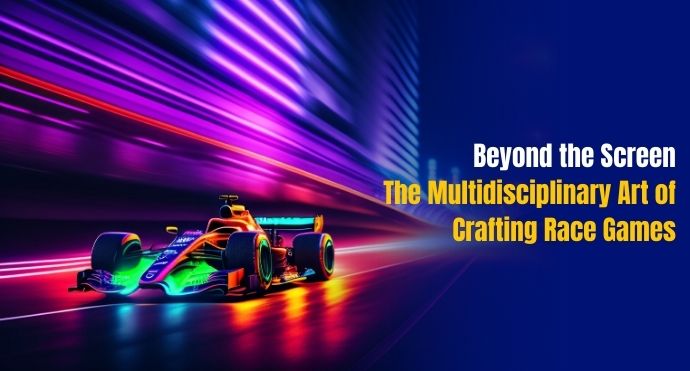In the realm of modern video games, the creation of a captivating and immersive race game goes far beyond the visible screen. It’s a symphony of creativity, technology, design, and collaboration that brings virtual speedways to life. In this article, we’re diving into the fascinating world of race game development, exploring the multidisciplinary aspects that contribute to the creation of these adrenaline-pumping digital experiences.
1. Conceptualizing the Drive: The Journey Begins
Every great race game starts with an idea. From simulating iconic real-world tracks to inventing fantastical circuits, the first step is creating a compelling concept. Developers, designers, and artists come together to brainstorm the game’s core mechanics, visual style, and unique selling points. Whether it’s an arcade-style racer or a hyper-realistic simulation, this initial phase sets the tone for the entire project.
2. Crafting Virtual Realities: Design and Artistry
Race games are a marriage of aesthetics and functionality. The visual design of vehicles, tracks, environments, and characters is a meticulous process. Artists work to strike a balance between realism and creativity, bringing the game world to life. Tracks must not only look impressive but also be designed for engaging gameplay. Attention to detail, from the smallest prop to the grandest vista, contributes to the player’s immersive experience.
3. The Technology Beneath the Hood: Programming and Engineering
Underneath the hood, skilled programmers and engineers bring the game to life. The physics engine calculates how a car handles on different surfaces, while the AI systems control opponents’ behavior. Networking code enables multiplayer races, and optimization ensures smooth performance across various platforms. These technological feats are often invisible to players but are the backbone of a seamless gaming experience.
4. Roaring Engines: Sound and Music
The audio dimension in race games is vital for creating atmosphere and excitement. The revving of engines, screeching tires, and roaring crowds enhance immersion. Composers and sound designers meticulously craft audio profiles for each vehicle, track, and event. A well-composed soundtrack adds emotional depth and rhythm to the racing experience.
5. The User’s Journey: User Interface and Experience
User interface (UI) and user experience (UX) designers ensure players can navigate menus, customize vehicles, and access game modes intuitively. A well-designed UI complements the game’s visual style while providing a smooth and enjoyable experience for players of all skill levels.
6. Collaborative Symphony: Teamwork and Iteration
Race game development is a collaborative effort involving professionals from diverse backgrounds. Designers, artists, programmers, audio engineers, and more collaborate closely, continually refining the game based on feedback and testing. Iteration is key to achieving a polished and engaging final product.
7. Beyond Launch: Post-Release Support and Evolution
The journey doesn’t end with the game’s release. Developers often provide updates, address bugs, add new content, and respond to player feedback. The ongoing evolution of a racing game ensures its longevity and maintains a strong connection with the gaming community.
In conclusion, crafting a racing game is a multidisciplinary art that combines creativity, technology, design, and collaboration. It’s a testament to human ingenuity that beyond the screen, a symphony of elements come together to create virtual speedways that thrill players around the world. So, the next time you buckle up for a digital race, remember the incredible journey that brought that experience to life – from concept to console, from pixels to pure adrenaline.



